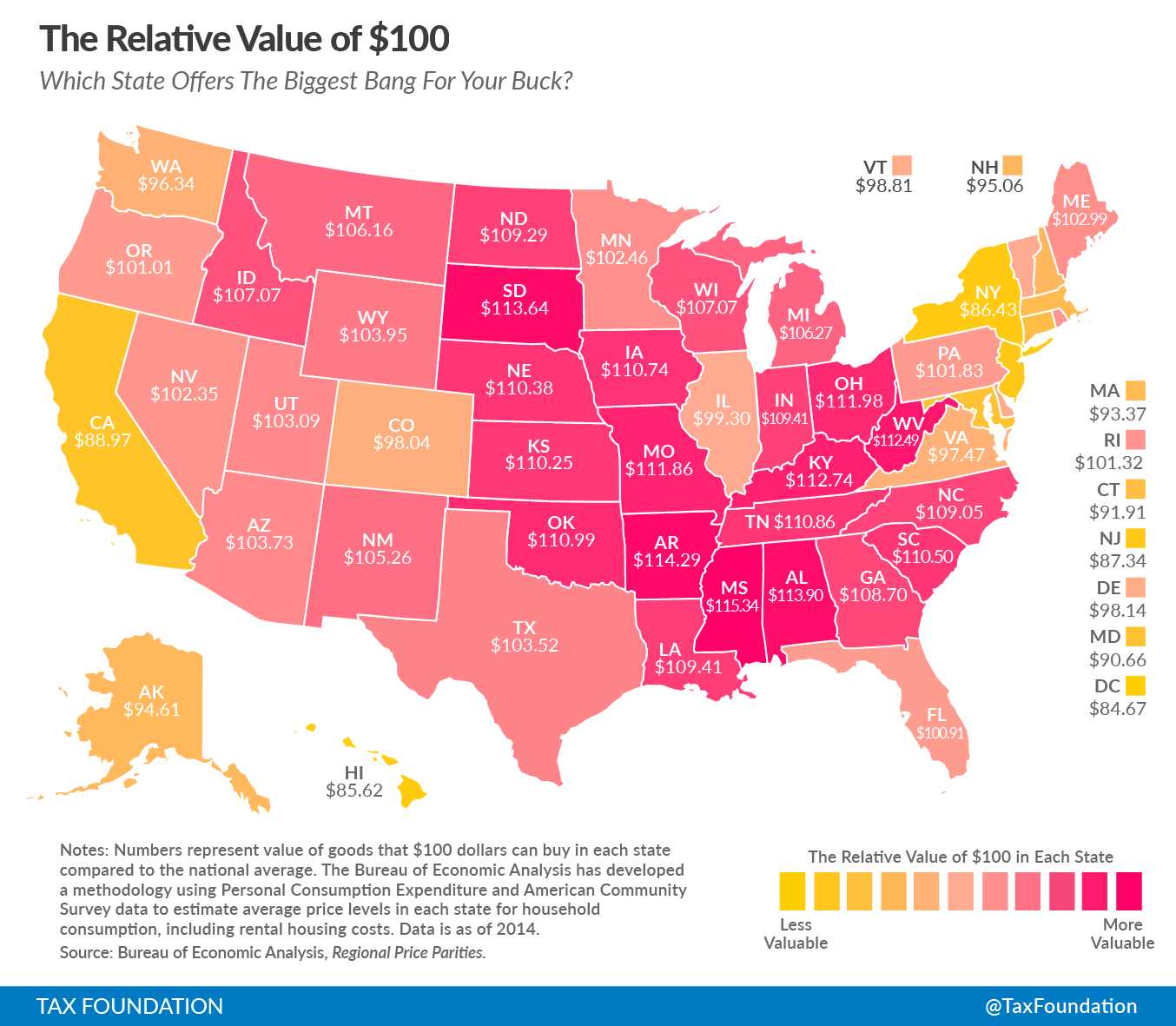The Tax Foundation has issued its annual report on what $100 gets you in each of the 50 states. It’s a great reminder of the cheapest and costliest places to live, and also provides some additional insight into why a national minimum wage doesn’t really make sense.
The map shows what the value of $100 is in each state, so if a state lists a value of $101, you’re getting a 1 percent bump on your money. If a state lists the value as under $100, the cost of living there exceeds the value of the bacon you’re bringing home. The data are based on 2014 numbers recently released by the Bureau of Economic Analysis.
As you can see, it really may be like living in paradise, but when it comes down to Hawaii’s value, $100 won’t get you very far. That’s the most expensive state in the nation. Residents of the District of Columbia, not technically a state, fare even worse, which is sad considering it doesn’t have the weather, the waves, or the way of life as Hawaii, but at least you can rub elbows with the people deciding how to spend dollars that were formerly yours.
Conversely, if you’re not making a lot of money in Mississippi, you may still be doing all right since $100 goes further there than in any other state in the nation. Similar circumstances for South Dakota, which is also sparsely populated — it’s 46th in population but 17th in size — so you could probably get a good deal on land.
As Alan Cole at the Tax Foundation explains it, the state-by-state differences are stark.
Regional price differences are strikingly large; real purchasing power is 36 percent greater in Mississippi than it is in the District of Columbia. In other words, by this measure, if you have $50,000 in after-tax income in Mississippi, you would have to have after-tax earnings of $68,000 in the District of Columbia just to afford the same overall standard of living.
So guess which state is more economical to live in, Nebraska or California? Yeah, we didn’t think you needed a cheat sheet for the answer to that. In all, one key to living large is to find the state with good salaries but not high costs of living.
Read more of the Tax Foundation’s report on the Value of $100 by State.






